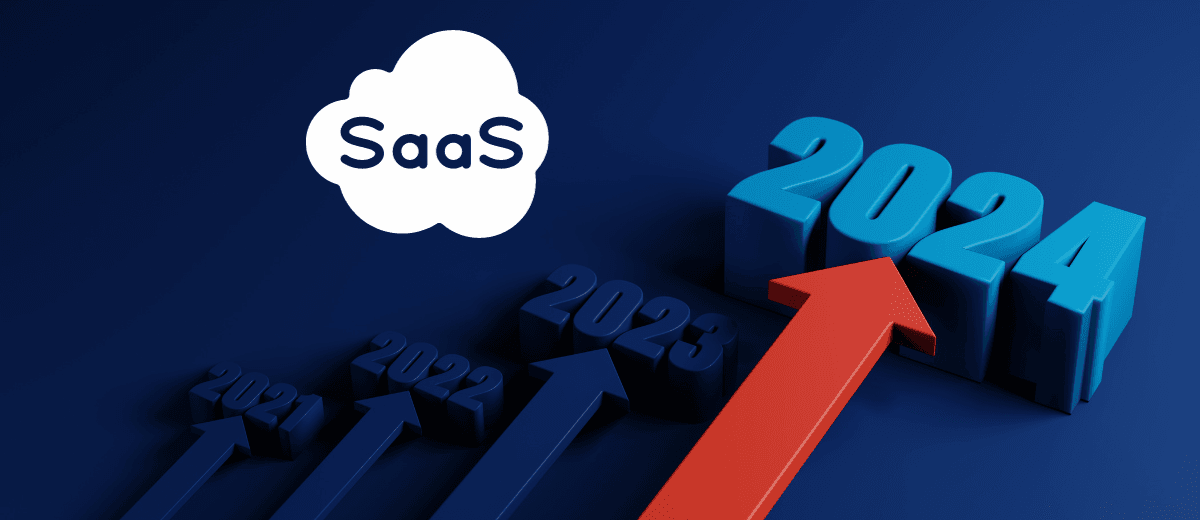Software as a Service (SaaS) has revolutionized how businesses access and utilize software applications, offering scalability, flexibility, and cost-effectiveness compared to traditional on-premises solutions. As SaaS continues to evolve, driven by advancements in technology and changing market demands, several key trends are shaping the future of SaaS development and software delivery.
1. Artificial Intelligence and Machine Learning Integration
Artificial Intelligence (AI) and Machine Learning (ML) are increasingly being integrated into SaaS applications to enhance functionality, automate processes, and deliver personalized user experiences. AI-powered features such as predictive analytics, natural language processing (NLP), and intelligent automation are transforming how businesses leverage data and interact with software.
Example: Customer relationship management (CRM) systems using AI to analyze customer behavior patterns and recommend personalized marketing strategies.
2. Microservices Architecture
Microservices architecture has gained popularity in saas development lifecycle for its modularity, scalability, and resilience. By breaking down applications into smaller, independent services that communicate through APIs, developers can deploy updates and scale components independently, enhancing agility and reducing downtime.
Example: A cloud-based accounting software utilizing microservices to manage separate functionalities such as invoicing, payroll, and financial reporting.
3. Containerization and Kubernetes
Containerization technologies like Docker and orchestration platforms like Kubernetes have revolutionized SaaS deployment by improving portability, scalability, and resource utilization. Containers allow developers to package applications and their dependencies into standardized units, ensuring consistency across different environments and facilitating seamless deployment and management.
Example: A project management tool using Docker containers to package and deploy application components across multiple cloud providers.
4. Serverless Computing
Serverless computing, also known as Function as a Service (FaaS), simplifies SaaS development by abstracting infrastructure management. Developers can focus on writing code (functions) without worrying about server provisioning, scaling, or maintenance. This model reduces operational overhead, optimizes resource utilization, and enables automatic scaling based on demand.
Example: An e-commerce platform using serverless functions to process user orders, handle inventory updates, and trigger notifications.
5. Edge Computing
Edge computing brings computation closer to the data source or end-users, reducing latency and improving application performance for SaaS applications. By processing data and executing tasks at the edge of the network (e.g., IoT devices, local servers), businesses can deliver real-time insights and responsive experiences while minimizing bandwidth usage.
Example: A fleet management software leveraging edge computing to process sensor data from vehicles in real-time and provide actionable insights to drivers and dispatchers.
6. API-First Development
API-first development emphasizes designing applications with well-defined, reusable APIs as the core foundation. This approach enables seamless integration with third-party services, facilitates interoperability between different systems, and supports the creation of ecosystem-driven SaaS solutions that extend functionality through partnerships and collaborations.
Example: A social media management platform offering API access for developers to integrate social analytics, scheduling, and reporting features into third-party applications.
7. DevOps and Continuous Delivery
DevOps practices and continuous delivery (CD) pipelines are essential for accelerating SaaS development cycles, improving collaboration between development and operations teams, and ensuring rapid, reliable software releases. Automation tools, test-driven development (TDD), and continuous integration (CI) enable frequent updates, bug fixes, and feature enhancements without disrupting service availability.
Example: A cloud-based document collaboration tool using CI/CD pipelines to automate testing, build deployment artifacts, and deliver new features to users seamlessly.
8. Data Privacy and Security
Data privacy regulations (e.g., GDPR, CCPA) continue to shape SaaS development trends, emphasizing the importance of robust security measures and compliance frameworks. SaaS providers are implementing encryption, access controls, and data anonymization techniques to protect user data, build trust, and mitigate cybersecurity risks.
Example: A healthcare management platform encrypting patient records, enforcing role-based access controls, and conducting regular security audits to comply with industry regulations.
Future Outlook
Looking ahead, the convergence of these technological trends is poised to redefine SaaS development and software delivery. As businesses increasingly embrace digital transformation and cloud-native solutions, SaaS providers will continue to innovate, leveraging AI, microservices, containers, and edge computing to create agile, scalable, and secure applications. Furthermore, the shift towards API-first architectures, DevOps practices, and enhanced data privacy will shape the next generation of SaaS offerings, catering to evolving user expectations and industry requirements.
In conclusion, SaaS development trends underscore a commitment to leveraging advanced technologies to drive innovation, improve operational efficiency, and deliver exceptional user experiences in an increasingly competitive marketplace. By staying abreast of these trends and embracing a culture of continuous improvement, SaaS providers can position themselves for sustained growth and success in the dynamic landscape of software delivery.
